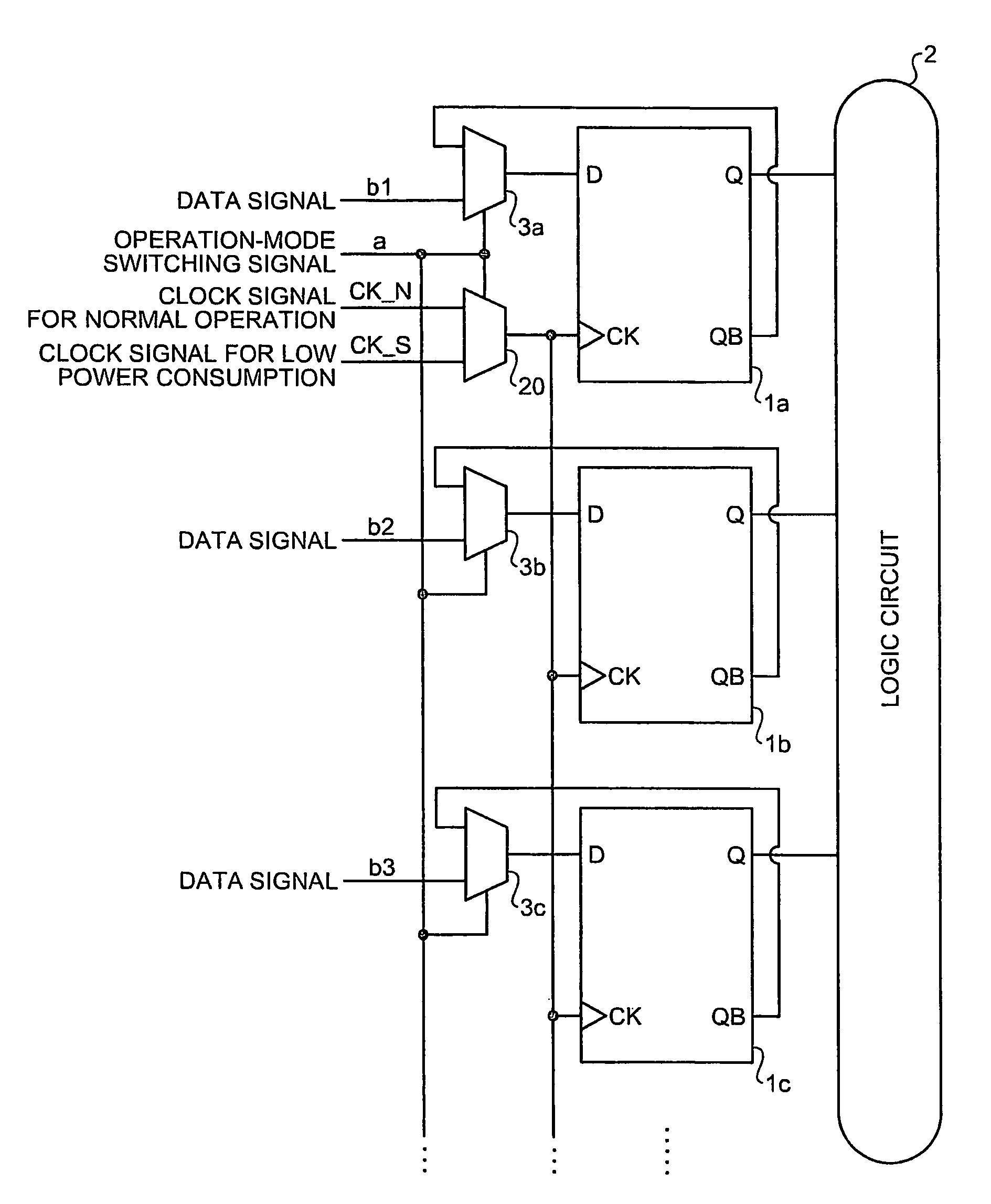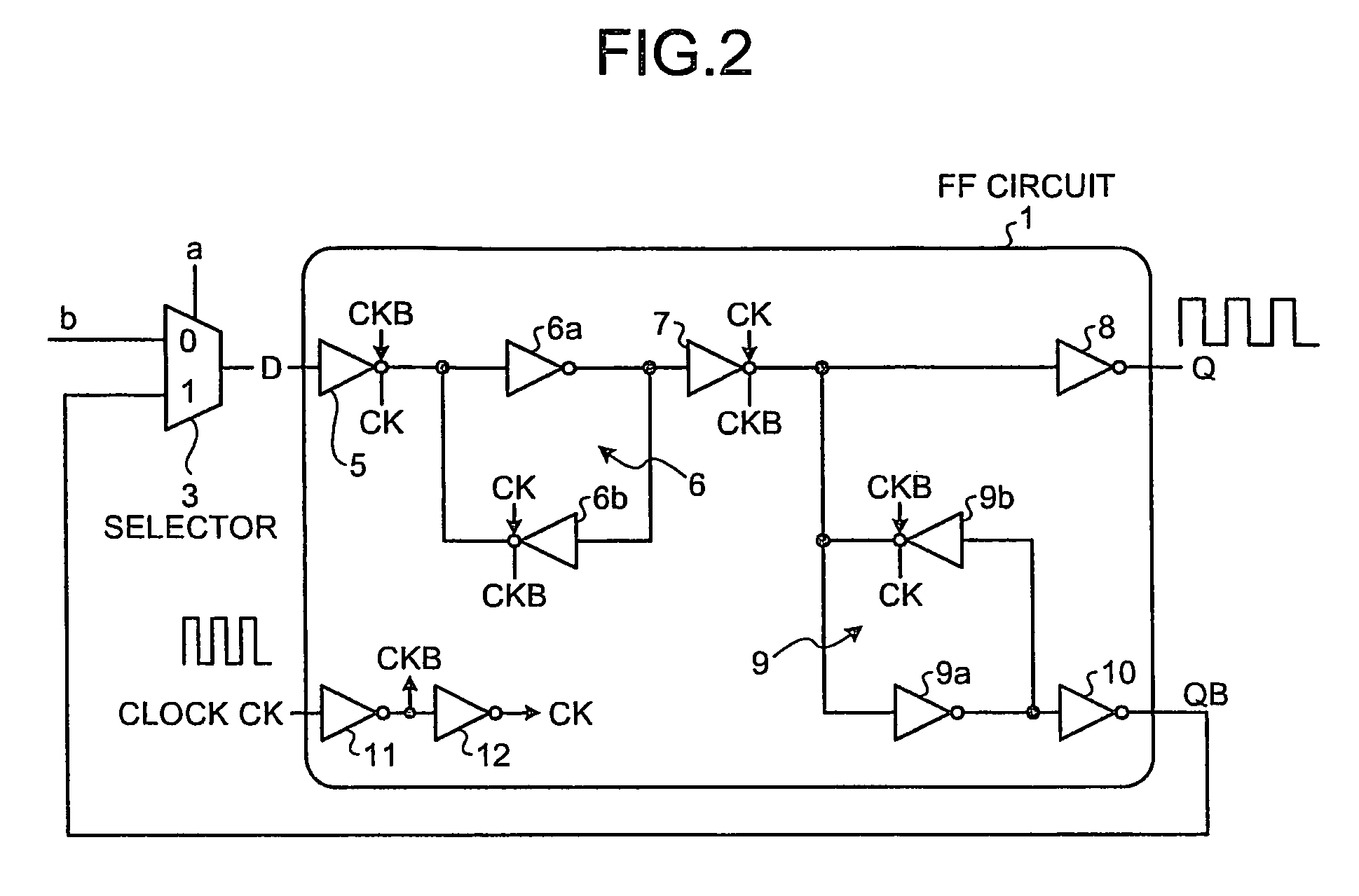Semiconductor integrated circuit device and countermeasure method against NBTI degradation
a technology of integrated circuits and semiconductors, applied in the direction of generating/distributing signals, pulse techniques, instruments, etc., can solve problems such as performance degradation, erroneous operation, and margin generation
- Summary
- Abstract
- Description
- Claims
- Application Information
AI Technical Summary
Benefits of technology
Problems solved by technology
Method used
Image
Examples
first embodiment
[0020]FIG. 1 is a block diagram of a configuration of relevant parts of a semiconductor integrated circuit device according to the present invention. In FIG. 1, in the semiconductor integrated circuit device, as at least one flip-flop circuit (hereinafter, “FF circuit”), which is a target circuit of the low power consumption mode, and a logic circuit to which each output of the at least one FF circuit is input, for example, FF circuits 1a, 1b, and 1c, and a logic circuit 2 to which respective data outputs (Q output) of the FF circuits 1a, 1b, and 1c are shown.
[0021]As shown in FIG. 1, selectors 3a, 3b, and 3c are provided on a side of data input terminals D of respective FF circuits 1a, 1b, and 1c. As an arrangement relationship of the selectors 3 (3a, 3b, and 3c) with respect to the FF circuits 1 (1a, 1b, and 1c), the arrangement relationship is shown by dividing it by functions in FIG. 1 and other drawings. However, as the actual arrangement relationship, needless to say, there ar...
second embodiment
[0035]As shown in FIG. 3, in the semiconductor integrated circuit device a selector 20, which is a clock selector, is added in the configuration shown in FIG. 1 (the first embodiment).
[0036]A clock signal CK_N for a normal operation and a clock signal CK_S for low power consumption are input to the selector 20. The output terminal of the selector 20 is commonly connected to the clock input terminal CK of the FF circuits 1a, 1b, and 1c. A switching control signal to the selector 20 is the operation-mode switching signal “a” same as in the case of the selector 3.
[0037]In the example shown in FIG. 3, the selector 20 selects the clock signal CK_N for a normal operation and transmits the signal to the clock input terminal CK when the operation-mode switching signal “a” is at the low level “0”, or selects the clock signal CK_S for low power consumption and transmits the signal to the clock input terminal CK when the operation-mode switching signal “a” is at the high level “1”.
[0038]The c...
PUM
 Login to View More
Login to View More Abstract
Description
Claims
Application Information
 Login to View More
Login to View More - R&D
- Intellectual Property
- Life Sciences
- Materials
- Tech Scout
- Unparalleled Data Quality
- Higher Quality Content
- 60% Fewer Hallucinations
Browse by: Latest US Patents, China's latest patents, Technical Efficacy Thesaurus, Application Domain, Technology Topic, Popular Technical Reports.
© 2025 PatSnap. All rights reserved.Legal|Privacy policy|Modern Slavery Act Transparency Statement|Sitemap|About US| Contact US: help@patsnap.com



